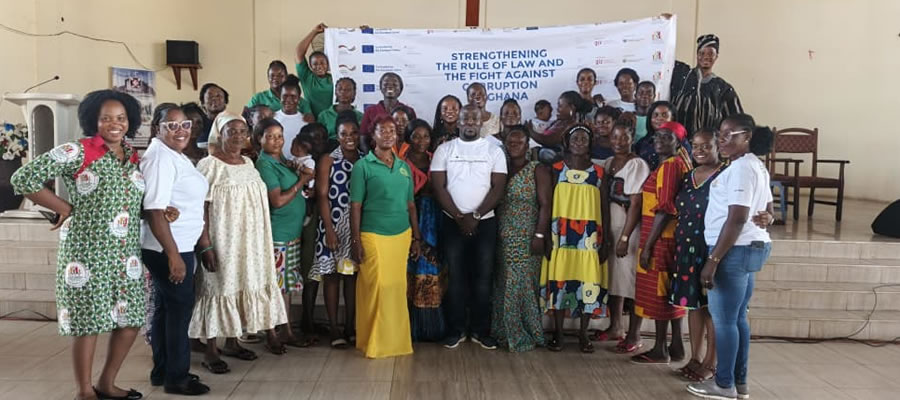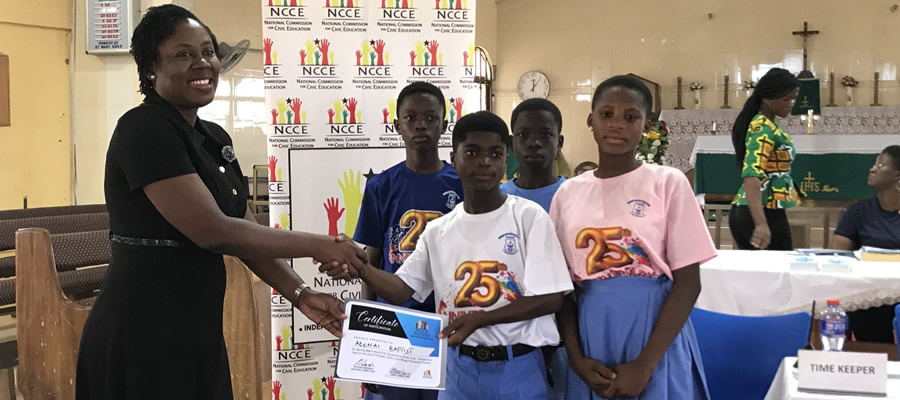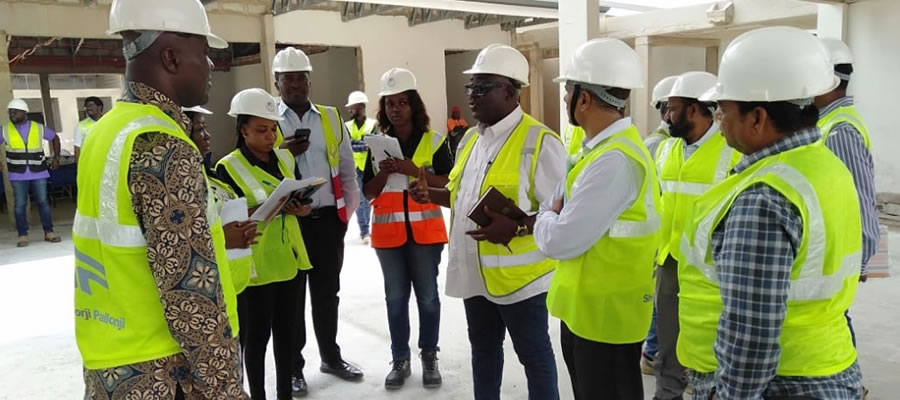

Literacy and Education
Education is an important aspect of social development of which Ningo-Prampram district is no exception. It is the process of acquiring knowledge, skills, values and attitudes to fully develop individual capacities for society wellbeing. Ningo-Prampram District Assembly places more emphasis on education and educational policies in other to accelerate development in the district and achieve the MDG 2 goal of universal primary education by 2015.
Literacy
A person is considered literate if he/she can read and write a simple statement with understanding in any language. Data on literacy are collected for persons 11 years and older in the population.
Table 3.9 and Figure 3.2 show literacy of the population in the district. About 71.2 percent of the population are literate and the remaining 28.8 percent are not literate. Of the literate population, 47.5 percent are literate in English and Ghanaian language, 45.6 percent are literate in English only and 3.8 percent are literate in Ghanaian language only. Those who are literate in English/French and Ghanaian language are 2.5 percent and 0.5 percent are literate in English and French.
Among the female population, higher proportions are literate in English only (46.6%) and Ghanaian language only (4.7%) than among the male population (44.7% and 3.0%, respectively). Among the male literate population, 50.1 percent are literate in English and Ghanaian language compared to 44.8 percent among the female literate population.
Considering Literacy by age, majority of the population aged 11-14 and 15-16 are literate in English language only, while majority of the population aged 35 years and older are literate in both English and Ghanaian language. The study of Ghanaian language among the youth should be encouraged in order to preserve our heritage. Similar patterns are observed for both male and female.
Level of Education
The level of education for persons 3 years and older is shown in Table 3.10. Almost half (48.3%) of the population currently attending school are in Primary, 16.1 percent are in JSS/JHS, 13.4 percent are in Kindergarten and 7.0 percent and 5.9 percent are in secondary and tertiary institutions, respectively. There are no marked differences in current school attendance by sex except at the tertiary level where the proportion among females (7.3%) is higher than that among males (4.5%). 35
Table 3.10 also shows that 31.0 percent of the population attended JSS/JHS in the past with a higher proportion among females (33.9%) than among males (28.4%). Those who attended primary school in the past are 25.1 percent, and a higher proportion are among females (30.4%) than the proportion among males (20.2%). On the whole, more females attended primary and JSS/JHS in the past than their male counterparts. On the other hand, more males than females completed secondary and tertiary levels than their female counterparts.
Date Created : 11/21/2017 8:06:29 AM












 facebook
facebook
 twitter
twitter
 Youtube
Youtube
 +233 593 831 280
+233 593 831 280 0800 430 430
0800 430 430 GPS: GE-231-4383
GPS: GE-231-4383 info@ghanadistricts.com
info@ghanadistricts.com Box GP1044, Accra, Ghana
Box GP1044, Accra, Ghana